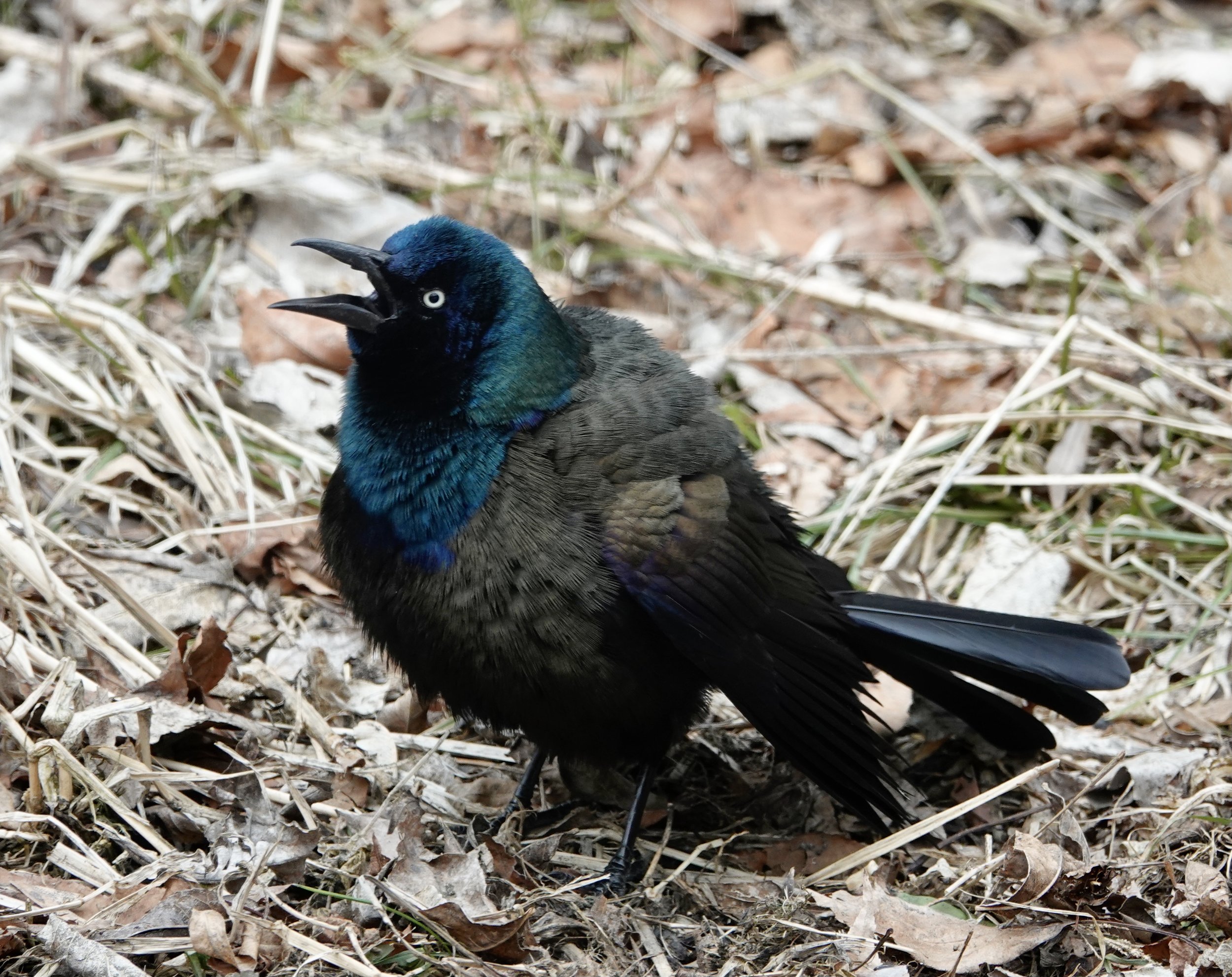Two wild turkeys talking turkey (to speak frankly). Photo by Al Batt
Naturally
Each morning, I look out a window to see nature has painted a new picture. A downy woodpecker was as still as a painting on the suet feeder because an accipiter was lurking.
I gloried in the company of redpolls. A single bird is enough to fill my cup with wonder. I heard blue jays make red-tailed hawk calls and understand the value of the mimicry. It’s an effective way to frighten other birds away from a food source.
Without a great deal of time and effort, I could see a bald eagle and a trumpeter swan. I remember when that was an impossibility. Turkey vultures eat things that have gone past their expiration dates. Predators look for something moving. Turkey vultures look for something that’s not moving. I saw river otters this winter. Seeing them brings joy and they appear to be having fun all the time.
Q&A
“Are wild turkeys native to Minnesota?” Prior to European settlement, wild turkeys were found only along the Iowa border in southeast Minnesota. As the state was settled, the few turkeys here were eliminated by hunting and habitat loss as early as 1880. By 1910, wild turkeys were extirpated from Iowa. The last turkey was seen in Lucas County, in the south-central part of the state, according to the DNR. Market hunting and reduced forest habitat led to their demise. Once extirpated, wild turkeys didn’t exist in Minnesota for almost 100 years before reintroductions were successful. In the early years of turkey raising by farmers, the turkeys resembled wild turkeys, but years ago farmers bred white turkeys because the white feathers are less visible on dressed carcasses and those birds have a lighter skin color, which is appealing to consumers. The white turkeys we see on farms today didn’t become common until the late 1930s and early 1940s. The 1940 Armistice Day Blizzard caused large losses to Minnesota's fledgling turkey industry. Turkeys were reintroduced in southeastern Minnesota in 1973 with 29 birds from Missouri. The Minnesota DNR traded ruffed grouse for them. The Show-Me State turkeys were released in Houston County. Hundreds of pen-raised turkeys from Maryland, Pennsylvania and Texas had been released in southern and central Minnesota in the mid-1920s and in 1957, pen-reared turkeys from Pennsylvania were set free in the Whitewater Wildlife Management Area in Winona County. All failed to survive. From 1964 to 1968, 39 wild turkeys trapped in Nebraska, South Dakota and Arkansas were released in the Gopher State. They were the Merriam’s subspecies, which are smaller and less hardy than the eastern subspecies native to Minnesota and they all perished. The class of 1973 did well and its population grew rapidly, with the first hunting season held in 1978. Over the years, Minnesota sent gray partridges to New York, black bears to Arkansas and Canada geese to Oklahoma in return for eastern wild turkeys. More birds were brought in from Wisconsin and Illinois. T.S. Roberts, in his 1932 “The Birds of Minnesota,” concluded wild turkeys likely never resided in Minnesota before early, failed efforts at introduction, but Aldo Leopold reported in 1931 that he’d found written accounts of turkeys living in southern Minnesota in Rock County (1871) and Blue Earth County (1773). Leopold added that no “single statement in this report is offered as final or sufficient fact.” It’s reasonable to speculate that turkeys might have occurred in Minnesota in those days. Wild turkeys are found in every state but Alaska.
Karen Wright of Mankato asked if the mallards in her yard might be the same pair that nested there last year. Nest fidelity in birds is common. Mallards tend to return to brood-rearing or wetland areas they had used previously. If those two mallards survived the year, they may be exhibiting breeding-ground fidelity in your yard.
“Do sandhill cranes nest in Minnesota and Iowa?” Minnesota has expanding populations. In northwestern Minnesota, sandhills are from the mid-continent population, which winters on the Texas Gulf Coast, while the east and central cranes are part of the eastern population, which winters in northern and central Florida. Suitable breeding areas offer water, nesting cover, isolation and a nearby foraging area. The nest is a platform constructed of vegetation and either floats in shallow water, is anchored to emergent vegetation or placed in uplands adjacent to the wetland. Wetland recovery and restoration have allowed the cranes to nest in Iowa since 1992. They live as long as 35 years in the wild with 30% of the colts surviving to fly.
Thanks for stopping by
“Nature's laws affirm instead of prohibit. If you violate her laws, you are your own prosecuting attorney, judge, jury, and hangman.”—Luther Burbank.
“Orbiting Earth in the spaceship, I saw how beautiful our planet is. People, let us preserve and increase this beauty, not destroy it!”—Yuri Gagarin, the first human in space.
Do good.
©Al Batt 2022
A self-inflicted noogie.
The boys are back in town. Male Red-Winged Blackbirds are a sign of spring for me. Males migrate before the females in spring and after the females in fall.
The boys are back in town. Male Red-Winged Blackbirds are a sign of spring for me. Males migrate before the females in spring and after the females in fall.
I went looking for spring and found Common Grackles.





